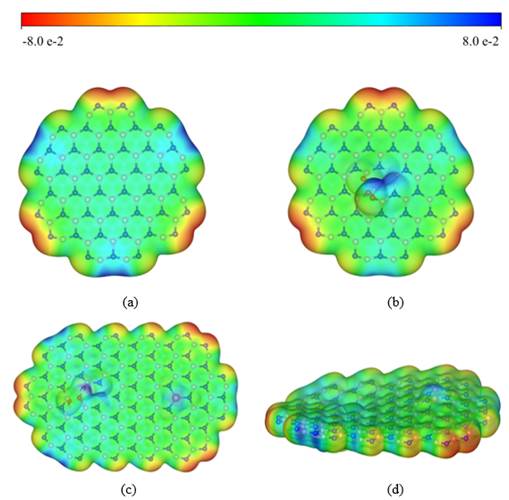| Framework Cu-doped boron nitride nanobelts with enhanced internal electric field for effective Fenton-like removal of organic pollutants |
| From: PublishDate:2020-07-31 Hits: |
The heterogeneous Fenton-like reaction has been developed as a practical and efficient technique for water purification by means of hydroxyl radicals (·OH), which possesses supreme oxidation potential and could effectively decompose organic matters in water. However, many of heterogeneous Fenton-like catalysts suffer from weak catalytic activity under ambient conditions, narrow effective pH range and poor stability. Hexagonal boron nitride (h-BN), a kind of two-dimensional layered material similar to graphene, is expected as a Fenton catalyst due to its high chemical and thermal stability, environmental compatibility and nontoxicity, and introducing metal atoms into BN can tailor its electronic structure and enhance the chemical reactivity. To date, few works have been reported on the synthesis of metal-doped BN and the application of BN related materials as Fenton-like catalysts. A team from Research Center for Eco-Environmental Sciences, Chinese Academy of Sciences has developed an innovative preparation method of Cu-doped boron nitride nanobelts (Cu-BN) and gained insight into the structure-activity relationship of the catalyst in Fenton system. Their research has been published on Journal of Materials Chemistry A in 2019. The team investigated the chemical structure of the as-prepared Cu-BN catalyst. Particularly, the detailed information on atomic neighboring structure was supplied by the Cu K-edge extended X-ray absorption fine structure (EXAFS) spectra at 8.979 keV, which were recorded in transmission mode at the beam lines (i.e., 1W1B) of Beijing Synchrotron Radiation Facility (BSRF). EXAFS curve fittings showed that besides the Cu-Cu shell derived from the backscattering for the adjacent Cu atoms with bond distance of 2.9 ?, Cu-N shell and Cu-B shell were also observed for the Cu-BN catalyst, confirming Cu was incorporated into the BN framework, forming Cu-N-B bonds. On the basic of the results, the electrostatic potential (ESP) on the samples was determined through density functional theory (DFT) calculations, as shown below. The theory calculations and experimental results verified that the incorporation of Cu resulted in the formation of an internal electric field due to the nonuniform electron distribution, thus promoting the production of ·OH. Therefore, the Cu-BN catalyst exhibited exceptionally high catalytic activity for the degradation and mineralization of various refractory pollutants over a wide pH range of 3-11 with great stability.
Distributions of electrostatic potential (ESP) for (a) perfect BN, (b) as-synthesized BN; (c) ESP plan map and (d) three-dimensional map for Cu-doped BN. (White, blue, pink, red and orange circles denote H, N, B, O and Cu atoms, respectively). The research provides a new perspective on the development of heterogeneous Fenton catalysts for water environmental remediation through tuning the electron distribution of the catalyst by metal doping. Synchrotron source is a vital characterization technique to reveal chemical bond structure of the environmental functional materials.
Article: Lingfei Li, Chun Hu, Lili Zhang,* Guangfei Yu, Lai Lyu, Fan Li and Ning Jiang. Framework Cu-doped boron nitride nanobelts with enhanced internal electric field for effective Fenton-like removal of organic pollutants, J. Mater. Chem. A, 2019, 7, 6946-6956. |
|
|
| Chinese
- Metal-free efficient photocatalyst for stable visible water splitting——Top ten major scientific progresses in China in 2015
- The nano-resolution imaging platform was awarded the first rate prize of Beijing Science and Technology in 2014
- Beamline 1W1 of BSRF started to runoperate in the couplingparasitic mode of BEPCII
- Synthesis of High Performance Polymer Materials for Field Effect-Transistors
- Surfactant molecular aggregates in green solvents
- GIXRD has played an important role in the characterization of organic thin-film transistors
Science Highlights
Home /
Copyright © 2011 - 2012 Beijing Synchrotron Radiation Facility


